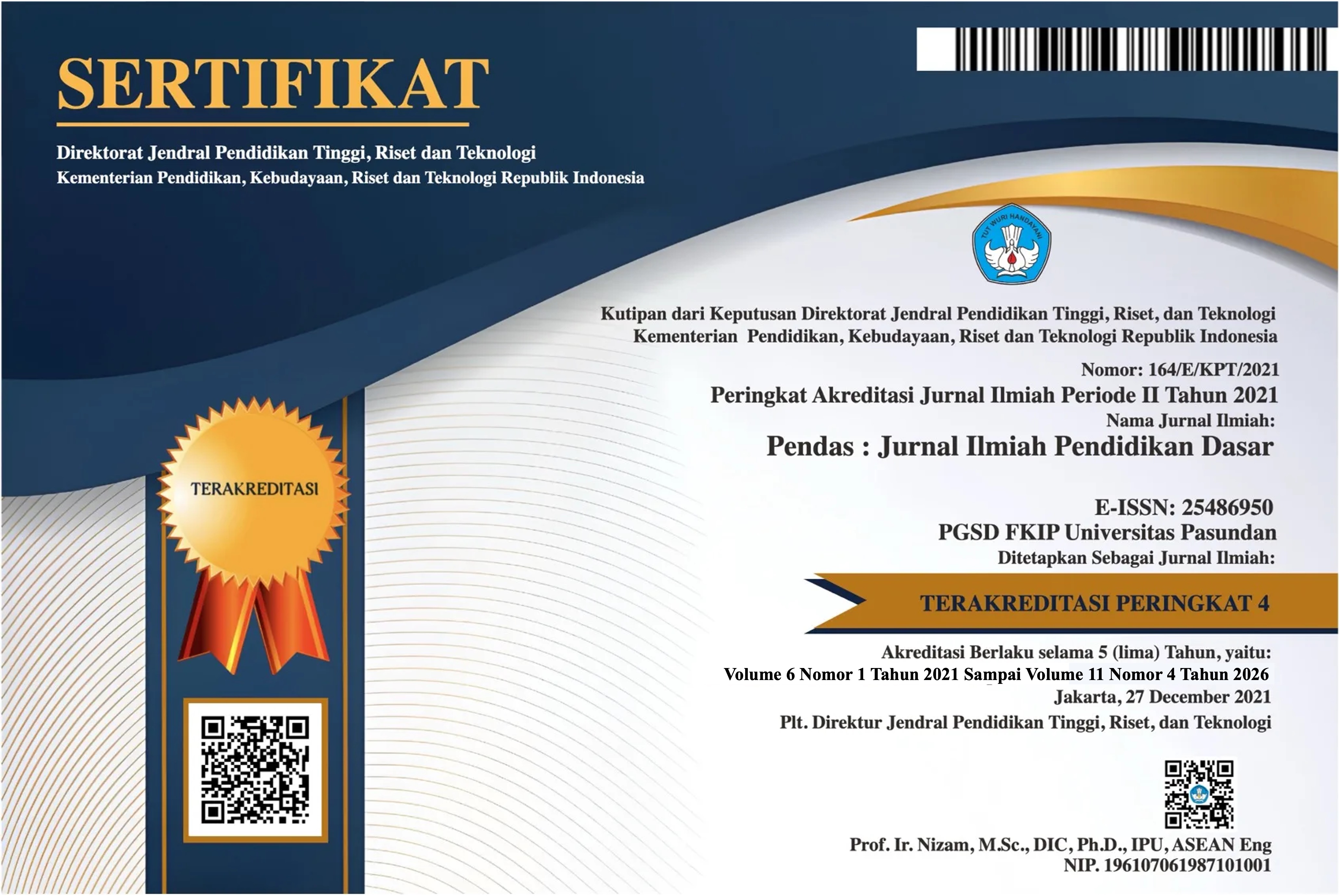ANALISIS DESKRIPTIF MINAT BELAJAR PESERTA DIDIK MENGGUNAKAN METODE COOPERATIVE LEARNING DI KELAS 5 SDN CIBUBUR 10
DOI:
https://doi.org/10.23969/jp.v9i2.13616Abstract
Pendidikan merupakan salah satu aspek penting dalam pembentukan karakter dan kemampuan individu. Di tengah dinamika pendidikan modern, pengembangan metode pembelajaran yang efektif menjadi perhatian utama bagi para pendidik. Salah satu metode pembelajaran yang semakin dikenal dan digunakan adalah Cooperative Learning. Penelitian ini bertujuan untuk mengetahui minat belajar peserta didik menggunakan metode Cooperative Learning di kelas 5 SDN Cibubur 10 serta mendeskripsikannya. Metode yang digunakan dalam penelitian ini adalah kuantitatif deskriptif dengan teknik pengumpulan data melelui kuesioner. Dalam penelitian ini, ditemukan bahwa penerapan metode Cooperative Learning secara signifikan meningkatkan minat belajar peserta didik di Kelas 5 SDN Cibubur 10. Kesimpulan dari penelitian ini adalah bahwa penerapan metode Cooperative Learning secara signifikan meningkatkan minat belajar peserta didik di Kelas 5 SDN Cibubur 10.
Downloads
References
Apriyani, R., Nugraha, U., Yuliawana, E., & Pendidikan Olahraga dan Kesehatan, P. (2022). MINAT SISWA TERADAP MATA PELAJARAN PENDIDIKAN JASMANI KELAS X SMA NEGERI 12 KOTA JAMBI PADA MASA NEW NORMAL. In Physical Education (Vol. 6, Issue 1).
Asiamah, N., Mensah, H., & Oteng-Abayie, E. F. (2017). General, target, and accessible population: Demystifying the concepts for effective sampling. The Qualitative Report, 22(6), 1607–1621.
Azlan, C. A., Wong, J. H., Tan, L. K., Huri, M. S., Ung, N. M., Pallath, V., & Ng, K. H. (2020). Teaching and learning of postgraduate medical physics using Internet-based e-learning during the COVID-19 pandemic–A case study from Malaysia. Physica Medica, 80, 10–16.
Baskarada, S. (2014). Qualitative case study guidelines. The Qualitative Report, 19(40), 1–25.
Chankseliani, M., & McCowan, T. (2021). Higher education and the sustainable development goals. Higher Education, 81(1), 1–8.
Chatterjee, S., & Hadi, A. S. (2015). Regression analysis by example. John Wiley & Sons.
Daniels, H. (2016). Learning in cultures of social interaction. Revista de Investigación Educativa, 34(2), 315–328.
Harris, L. R., & Brown, G. T. (2019). Mixing interview and questionnaire methods: Practical problems in aligning data. Practical Assessment, Research, and Evaluation, 15(1), 1.
Kent, R. (2020). Data construction and data analysis for survey research. Bloomsbury Publishing.
Lakens, D. (2022). Sample size justification. Collabra: Psychology, 8(1), 33267.
Mariesa, L. (2024). Peningkatan Minat Belajar Dan Keaktifan Siswa Melalui Model Pembelajaran Cooperative Learning Pada Siswa Kelas 4 Sd Bestari Utami. Indonesian Journal of Instructional Technology.
Meeker, W. Q., Escobar, L. A., & Pascual, F. G. (2022). Statistical methods for reliability data. John Wiley & Sons.
Mohajan, H. K. (2020). Quantitative research: A successful investigation in natural and social sciences. Journal of Economic Development, Environment and People, 9(4), 50–79.
Munoz-Martínez, Y., Monge-López, C., & Seijo, J. C. (2020). Teacher education in cooperative learning and its influence on inclusive education. Improving Schools, 23(3), 277–290.
O’Donnell, A. M., & King, A. (2014). Cognitive perspectives on peer learning. Routledge.
Peercy, C., & Svenson, N. (2016). The role of higher education in equitable human development. International Review of Education, 62, 139–160.
Thomas, L. (2016). Developing inclusive learning to improve the engagement, belonging, retention, and success of students from diverse groups. In Widening higher education participation (pp. 135–159). Chandos Publishing.
Vygotsky, L., & Cole, M. (2018). Lev Vygotsky: Learning and social constructivism. In Learning theories for early years practice (pp. 68–73). SAGE Publications Inc.
Downloads
Published
Issue
Section
License
Copyright (c) 2024 Pendas : Jurnal Ilmiah Pendidikan Dasar

This work is licensed under a Creative Commons Attribution 4.0 International License.



















